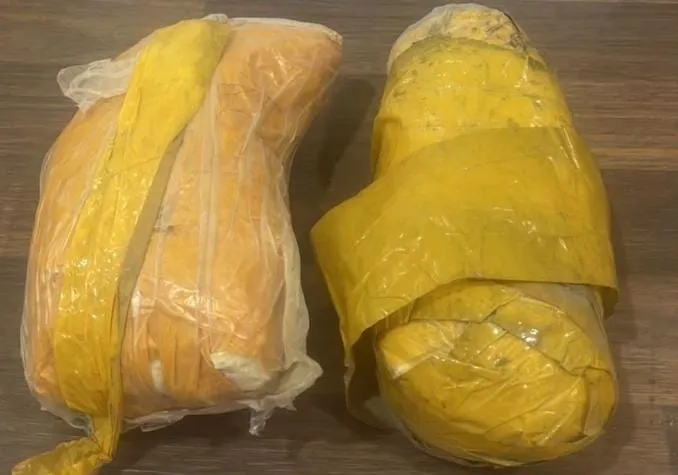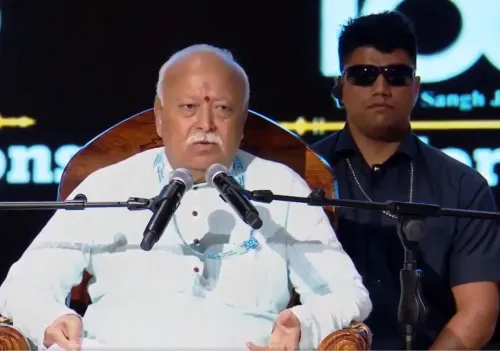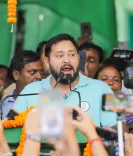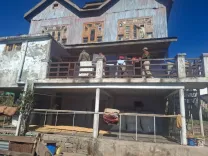Has the Haryana Narcotics Bureau Intensified Action Against Drug Traffickers?

Synopsis
Key Takeaways
- Increased surveillance on online drug transactions.
- Collaboration with inter-agency at state and national levels.
- Focus on dismantling networks and funding channels.
- Public awareness campaigns to protect youth.
- Implementation of an incentive-based evaluation system.
Chandigarh, Nov 7 (NationPress) Aiming for a drug-free Haryana, the Haryana State Narcotics Control Bureau has ramped up its aggressive measures against the online networks and financial structures of drug traffickers.
During the fifth bi-monthly review meeting held on Friday, Director General of Police O.P. Singh stressed that Haryana Police will expand its operations beyond mere narcotics seizures to dismantling the underlying sources, networks, and funding mechanisms that facilitate drug trafficking.
Several critical priorities were outlined for the upcoming months, including enhanced monitoring of cyber and online drug activities, improved inter-agency collaboration at both state and national levels, thorough investigations into financial trails, and heightened public awareness campaigns across villages to protect youth from addiction.
Moreover, a monthly performance assessment and an incentive-based evaluation system will be introduced for all units.
From January to October, the bureau filed 232 FIRs and apprehended 422 suspects. Among these, 63 cases involved drugs in commercial quantities, which accounts for 16.22 percent of all such cases registered in Haryana.
The bureau made substantial seizures of pharmaceutical drugs, opium, poppy straw, and charas (hashish), highlighting its focus on both traditional and emerging drug threats. Since 2020, it has registered 1,712 FIRs and arrested 2,994 individuals, including 264 commercial quantity (CQ), 1,051 intermediate quantity (IQ), and 397 small quantity (SQ) cases.
Between January and October, a total of 3,007 NDPS cases were filed in Haryana, leading to 5,378 arrests. The bureau accounted for 63 CQ cases, representing 16.22 percent of all such cases in the state.
In terms of inter-state and international actions, Haryana Police have implemented stringent measures against drug networks. From January to October 2025, 436 inter-state and 27 international traffickers were apprehended.
The inter-state arrests involved offenders from Uttar Pradesh, Punjab, Rajasthan, and Delhi, while 22 of the international arrests were of Nigerian nationals. Preventive measures under the PITNDPS Act have been prioritized.
Sixty-two offenders have been detained under preventive detention orders, primarily from Dabwali, Kaithal, and Fatehabad districts, illustrating the bureau's unwavering commitment to curbing repeat offenders.
Targeting the financial backbone of drug traffickers, assets worth over Rs 10.43 crore belonging to 104 traffickers have been identified and frozen under Section 68F of the NDPS Act in 2025 alone.
From 2022 to 2025, a total of 113 such properties were identified and destroyed, marking a significant advance toward dismantling the economic framework of the drug trade in the state. The crackdown will persist relentlessly.
Between January and October, out of 1,185 NDPS cases adjudicated in Haryana, 575 convictions were achieved.
The bureau now emphasizes thorough investigations instead of superficial inquiries. Recent cases, including one with 11 connected arrests, showcase the Bureau’s focus on both the source and destination of the drug supply chain.
DGP Singh issued clear directives to all officers, reaffirming that the bureau's approach to combating drugs is both uncompromising and decisive.
"Our mission is not just to apprehend offenders but to entirely dismantle the ecosystem of drug trafficking—whether it be cyber networks, funding channels, or ground-level gangs. This is not merely a duty but a moral obligation to our society," he stated.
He further warned that any negligence in anti-drug operations will lead to strict consequences and accountability.
Each unit in charge has been instructed to treat every case as a 'model case', ensuring integrated and effective efforts in investigation, seizure, follow-up, and public awareness.









